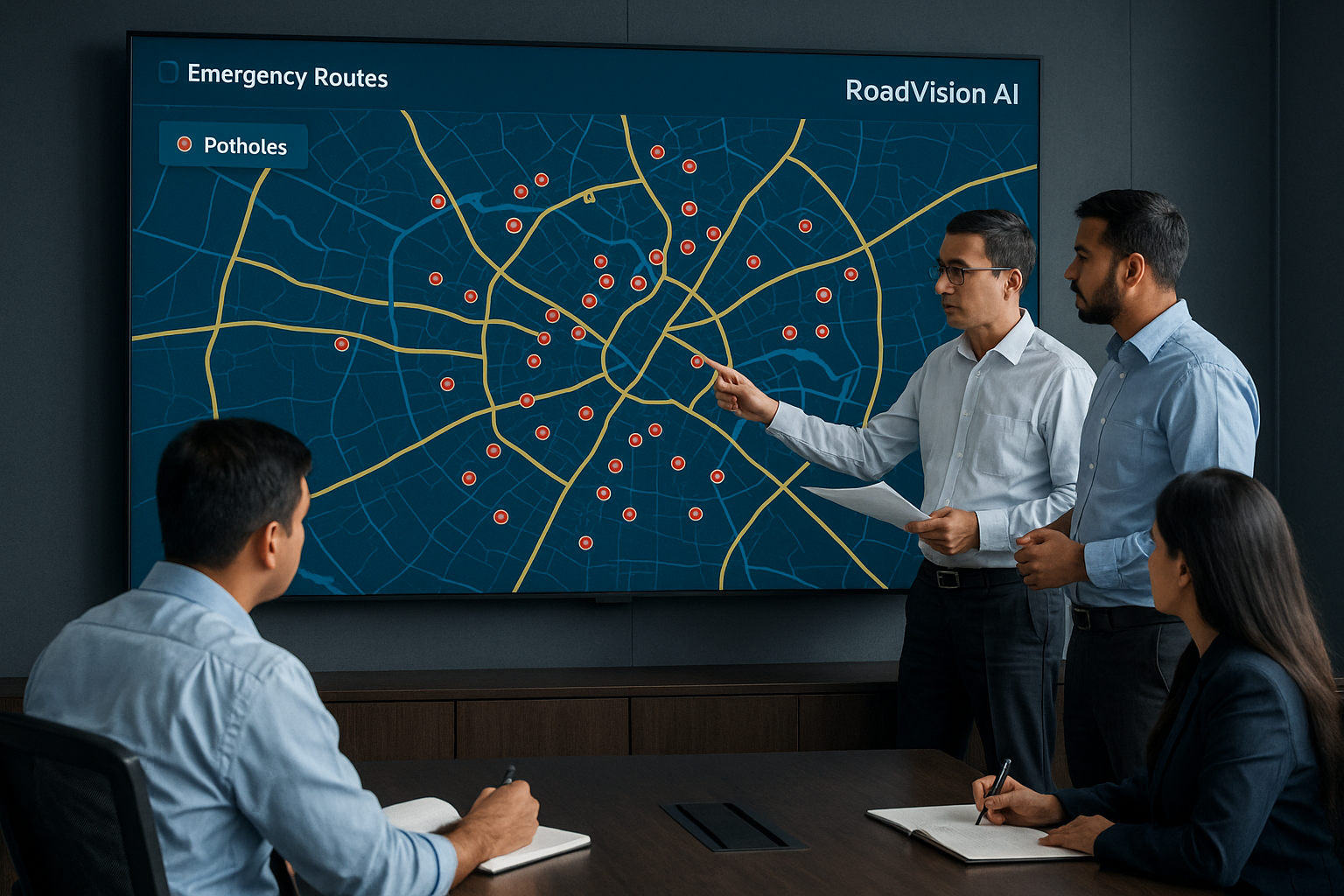Contact Us
RoadVision AI
Private Limited
Office No. 308 & 310, B Block
Ansal Chamber - 1, Bhikaji Cama Place,
Near Engineers India Limited (EIL) Bhawan, New Delhi - 110066
© 2024 | RoadVision AI | All rights reserved
Timely emergency response is critical for saving lives. However, a factor often overlooked in urban planning is the condition of the roads. Potholes, a common form of surface distress, don’t just inconvenience daily commuters — they directly affect how quickly ambulances, fire trucks, and police vehicles can reach their destinations. This is where AI-Based Road Management Systems like RoadVision AI are transforming the landscape by enabling faster detection, prioritization, and repair of road defects.

In a medical emergency, every second counts. A delay of even a few minutes in ambulance arrival time can be the difference between life and death. Similarly, fire trucks navigating poor road infrastructure may arrive too late to prevent major damage.
Potholes slow vehicles down, damage suspension systems, and increase the risk of accidents—particularly when navigating at high speeds during emergency calls. In addition, drivers often swerve to avoid potholes, causing sudden maneuvers that could delay vehicles behind them or cause collisions.
Traditional road audits rely on periodic, manual inspections that are time-consuming and inconsistent. An AI-Based Road Management System like RoadVision AI solves this by automating the detection, classification, and prioritization of road defects in real time.
RoadVision AI is already in use by municipal bodies and private contractors across India. It enables:
By mapping high-frequency emergency routes and prioritizing those for early maintenance, RoadVision AI ensures emergency response times remain optimal.
Implementing an AI-Based Road Management System should be a core strategy in smart city development. Authorities can use AI-generated road condition data to:
Potholes are more than a nuisance — they’re a risk to public safety. With India’s urban centers growing rapidly, the strain on emergency services will only increase. Investing in an AI-Based Road Management System like RoadVision AI not only reduces response delays but also lays the groundwork for a more resilient, responsive urban transport system.
RoadVision AI is transforming infrastructure development and maintenance by harnessing artificial intelligence and computer vision AI to revolutionize road safety and management. By leveraging advanced computer vision artificial intelligence and digital twin technology, the platform enables the early detection of potholes, cracks, and other road surface issues, ensuring timely repairs and better road conditions. With a mission to build smarter, safer, and more sustainable roads, RoadVision AI tackles challenges like traffic congestion and ensures full compliance with IRC Codes. By empowering engineers and stakeholders with data-driven insights, the platform reduces costs, minimizes risks, and enhances the overall transportation experience.
Potholes cause ambulances to slow down or reroute, significantly increasing response time. Systems like RoadVision AI help by detecting and prioritizing critical road defects.
Yes, AI platforms like RoadVision AI identify road damage in real time, enabling quick repairs and route adjustments to minimize emergency service delays.
RoadVision AI offers automated defect detection, GPS tagging, and severity analysis, making it a reliable tool for improving road conditions on emergency corridors.